The Best Cayenne Pepper Substitute (+ Many Alternatives)
Want to learn more about cayenne peppers? Or make your own ground cayenne pepper? Or maybe you’ve run out of cayenne, and you’re in desperate need of a cayenne pepper substitute? No matter the reason, we’ve got you covered on everything cayenne pepper.
If you like to add a little heat to your meals, you need ground cayenne pepper in your pantry. It’s a bright red chile powder made from dried cayenne peppers. And a little goes a long way!
But if you’ve run out of cayenne, don’t worry! You can easily make your own ground cayenne powder from dried cayenne peppers. Or use another spicy red chilli to make a cayenne pepper substitute.
We also suggest plenty of replacements for cayenne you may already have in your spice rack – and how to use them. Our favourite is red chilli powder.
And we look at the best fresh peppers to use as a cayenne pepper alternative, like tabasco peppers and Thai chillies.
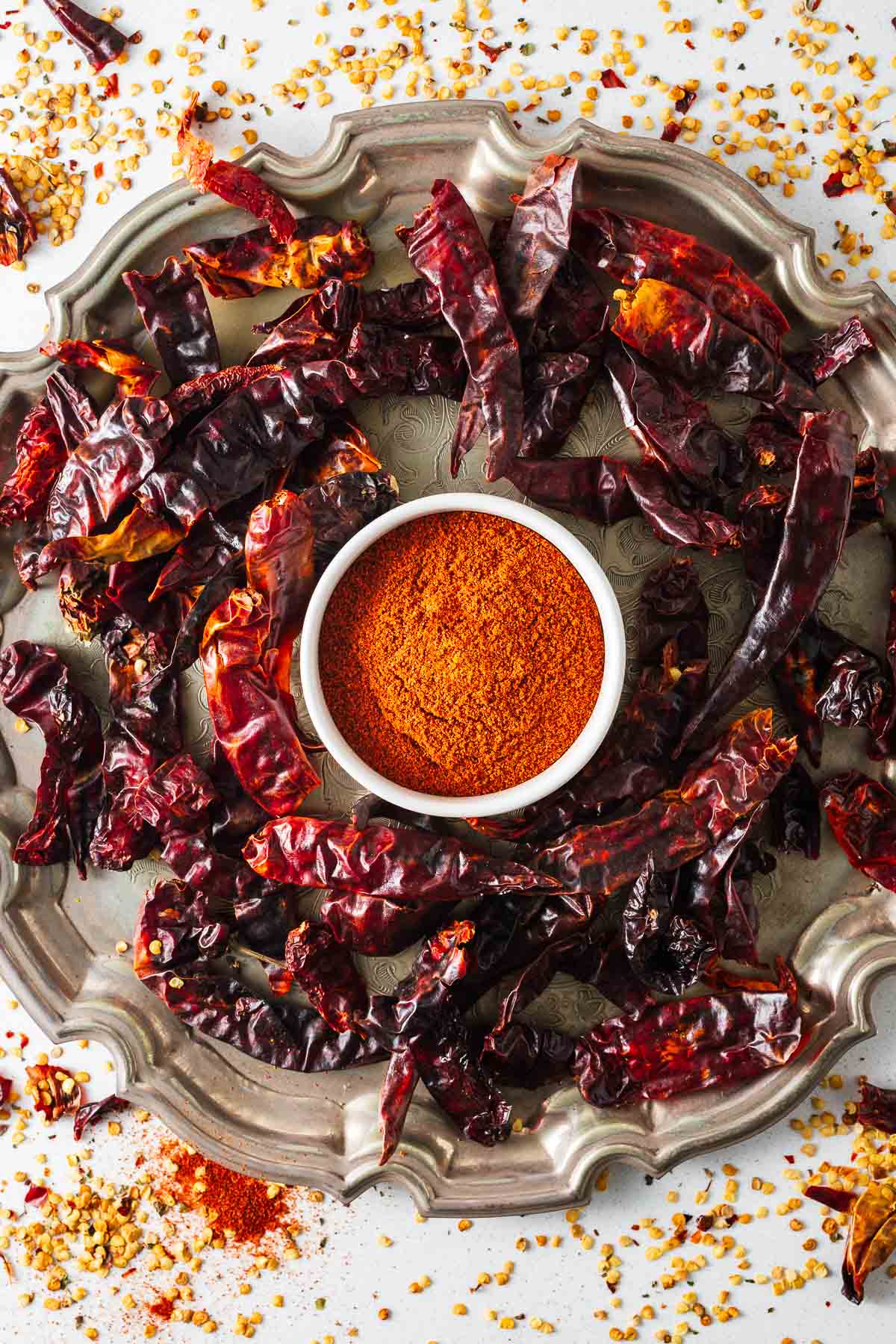
What is cayenne pepper?
Cayenne pepper is a hot chilli pepper with a fiery red colour. It’s a variety of Capsicum annuum, a species of pepper that includes bell peppers and jalapeños.
You can buy fresh cayenne peppers, whole dried cayenne pepper or cayenne powder or chilli flakes.
The heat level of cayenne pepper can vary from 30,000 to 50,000 Scoville Heat Units (SHU) on the Scoville scale. For reference, this is hotter than a jalapeño pepper (2,500 to 8,000 SHU) but milder than a habanero pepper (100,000 to 350,000 SHU).
If you can taste past the heat, you will find that cayenne pepper is sweet, slightly fruity and a bit smoky.
The best substitutes for cayenne pepper
Cayenne pepper is easily accessible. You’ll find cayenne pepper in some form at most grocery stores. But, if you or your local grocery store ran out of cayenne, don’t worry! We’ve gathered plenty of great substitute options.
When you’re looking for the perfect cayenne pepper substitute, the best option is a chilli pepper with a similar heat level and flavour profile. But we’ll also look at milder cayenne pepper alternatives – and spicier ones – to find the best cayenne pepper substitute for you.
The best fresh cayenne pepper substitutes:
And the best ground cayenne pepper substitutes:
- Homemade ground chilli pepper
- Red chilli powder
- Korean gochugaru
- Chipotle powder
- Red pepper flakes
- Hot paprika
And if you’re looking for something different:
1. Tabasco peppers: The best heat level match
Tabasco peppers are a great substitute for cayenne peppers. While these hot peppers are technically not from the same species as cayenne pepper (Capsicum frutescens as opposed to Capsicum annuum), they’re a perfect match for the cayenne pepper heat.
The Tabasco pepper measures between 30,000 and 50,000 Scoville Heat Units on the Scoville scale – the same heat range as cayenne pepper!
But their flavour is a bit less sweet and smoky than cayenne peppers.
You can use fresh tabasco peppers as a direct substitute for fresh cayenne pepper. Add a pinch of smoked paprika for that slight cayenne smokiness.
2. Thai peppers: A spicier alternative
Thai peppers measure between 50,000 and 100,000 SHU – roughly twice as spicy as cayenne pepper.
These peppers have a fruity, slightly earthy flavour. However, the difference is usually subtle enough that it won’t be too noticeable. You can always add a tiny pinch of smoked paprika for a subtly smokier flavour.
If you want to match the heat of fresh cayenne pepper, start with a quarter of what the recipe calls for. Then add more to taste. Or, if you want to amp up the spiciness, use Thai pepper as a direct substitute for fresh cayenne pepper.
3. Serrano peppers
Serrano peppers are a milder alternative to cayenne peppers. They are usually between 5,000 and 10,000 SHU, which is still moderately hot but not as intense as cayenne peppers.
The red peppers make a good substitute for cayenne pepper in terms of flavour. Serrano peppers have a bright, slightly smoky flavour with a hint of sweetness.
You can use serrano peppers instead of cayenne pepper in recipes like salsa, chilli, and hot sauces.
However, if you want to match the cayenne pepper heat, you will need to use more serrano peppers than the amount of cayenne peppers called for in the recipe. Start with two serrano peppers for every cayenne pepper called for in your recipe and adjust to taste.
Or use red serrano peppers as a direct substitute for milder heat.
4. Aleppo peppers: A milder substitute
Aleppo peppers are a milder substitute for cayenne pepper. They measure up to 10,000 SHU compared to cayenne’s top end of 50,000 SHU.
Aleppo peppers have a sweet red pepper flavour with earthy, almost smoky notes. The flavour is a great match for cayenne pepper.
You can use fresh Aleppo peppers as a milder substitute for cayenne pepper.
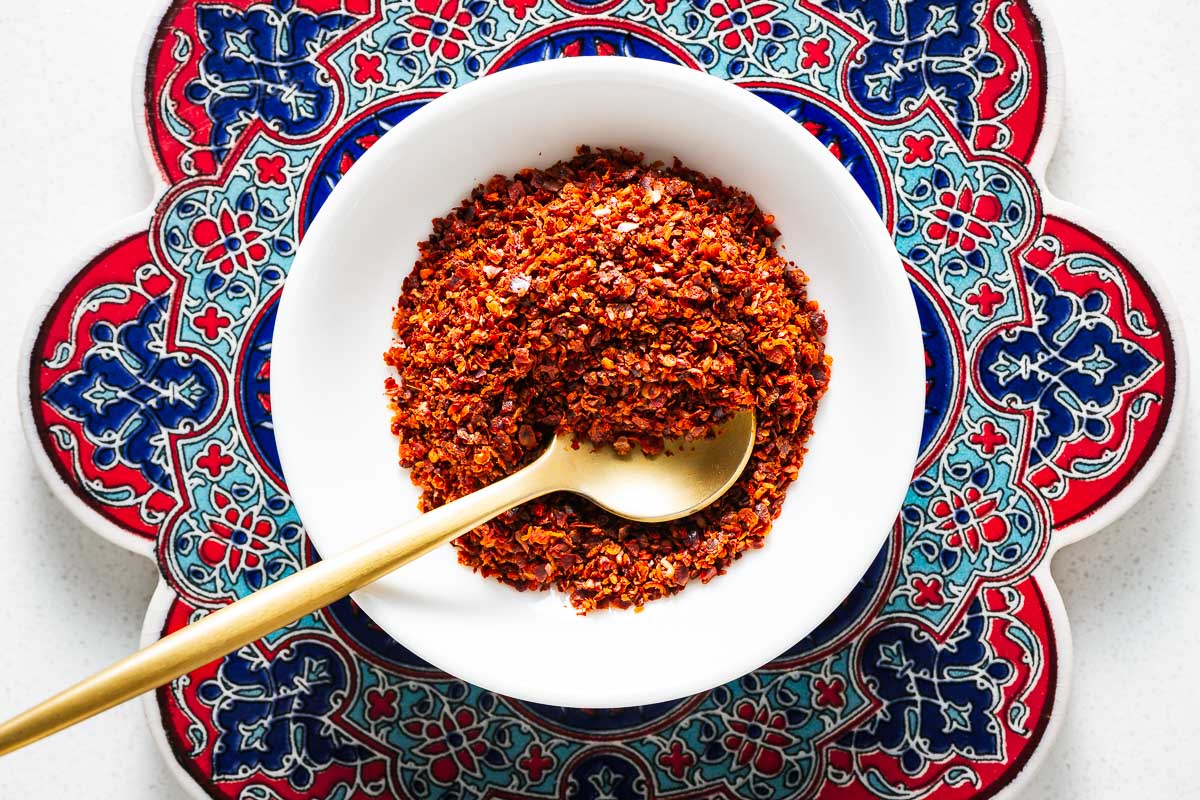
And you can use Aleppo pepper flakes as a substitute for ground cayenne pepper to sprinkle over finished dishes for a less spicy kick. The texture of Aleppo pepper flakes is much coarser than ground cayenne pepper, so it’s not the ideal cayenne substitute in smooth dressings and sauces.
But if you want to match the intensity of cayenne pepper heat, you will need to use way more. Start with double the amount of Aleppo pepper as cayenne pepper in a recipe. Then adjust to taste.
5. Homemade ground chilli pepper: The best homemade alternative
Cayenne pepper is a bright red chilli powder with moderate to high heat. It’s a common ingredient in many spice blends and spicy recipes.
If you’re out of cayenne powder, you can make ground cayenne pepper from dried cayenne peppers. Or you can use another spicy red chilli for an easy ground cayenne pepper substitute.
Dried chiles de árbol make an excellent substitute for whole dried cayenne peppers. So, feel free to use them here. Or use dried Thai chillies for extra heat.
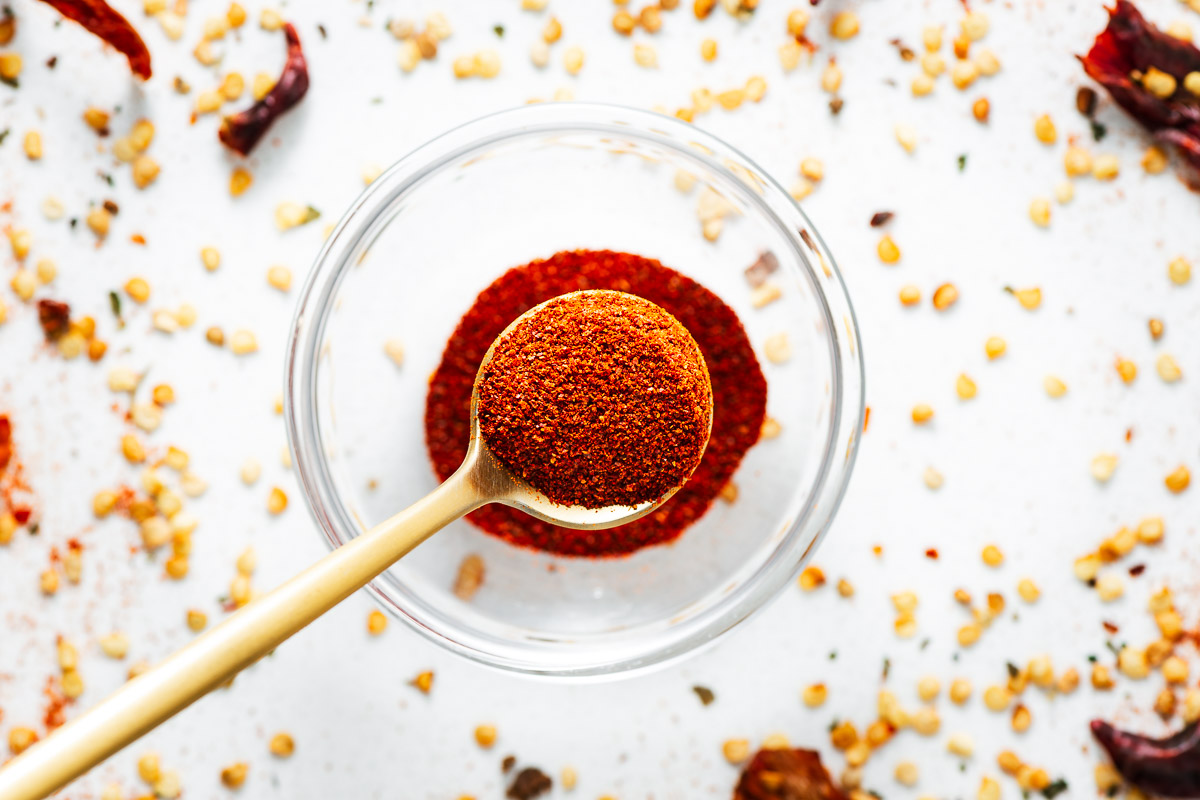
See how to make ground cayenne powder for step-by-step instructions.
Use your homemade ground cayenne pepper as a direct substitute in recipes. Or adjust the quantity to taste if you used a different type of chilli to make a ground cayenne pepper substitute.
6. Red chilli powder: Our favourite shop-bought alternative
Red chili powder (or ground red pepper) is a blend of different types of chilli peppers. Chile powder refers to single-varietal chilli powders – like ancho chile powder made with only ancho chillies. To confuse you even further, I spell chilli pepper with two l’s because I use the British English spelling.
Confused? Red chili powder is the same as red chilli powder, but not the same as chile powder.
Technicalities aside, red chilli powder can be a great cayenne powder substitute. It often contains cayenne pepper in the spice blend. And it’s a great all-purpose chilli powder that matches the fine texture of typical ground cayenne powder.
Look for medium or hot red chili powder for a closer match to cayenne pepper. Or use whichever you prefer to match your spice tolerance.
Use red chilli powder as a direct replacement for cayenne pepper.
7. Korean gochugaru
Korean gochugaru is available as a fine powder or, most often, as flakes. Gochugaru can also have a mild or moderate heat level (1,500 SHU or 10,000 SHU) depending on the type of pepper.
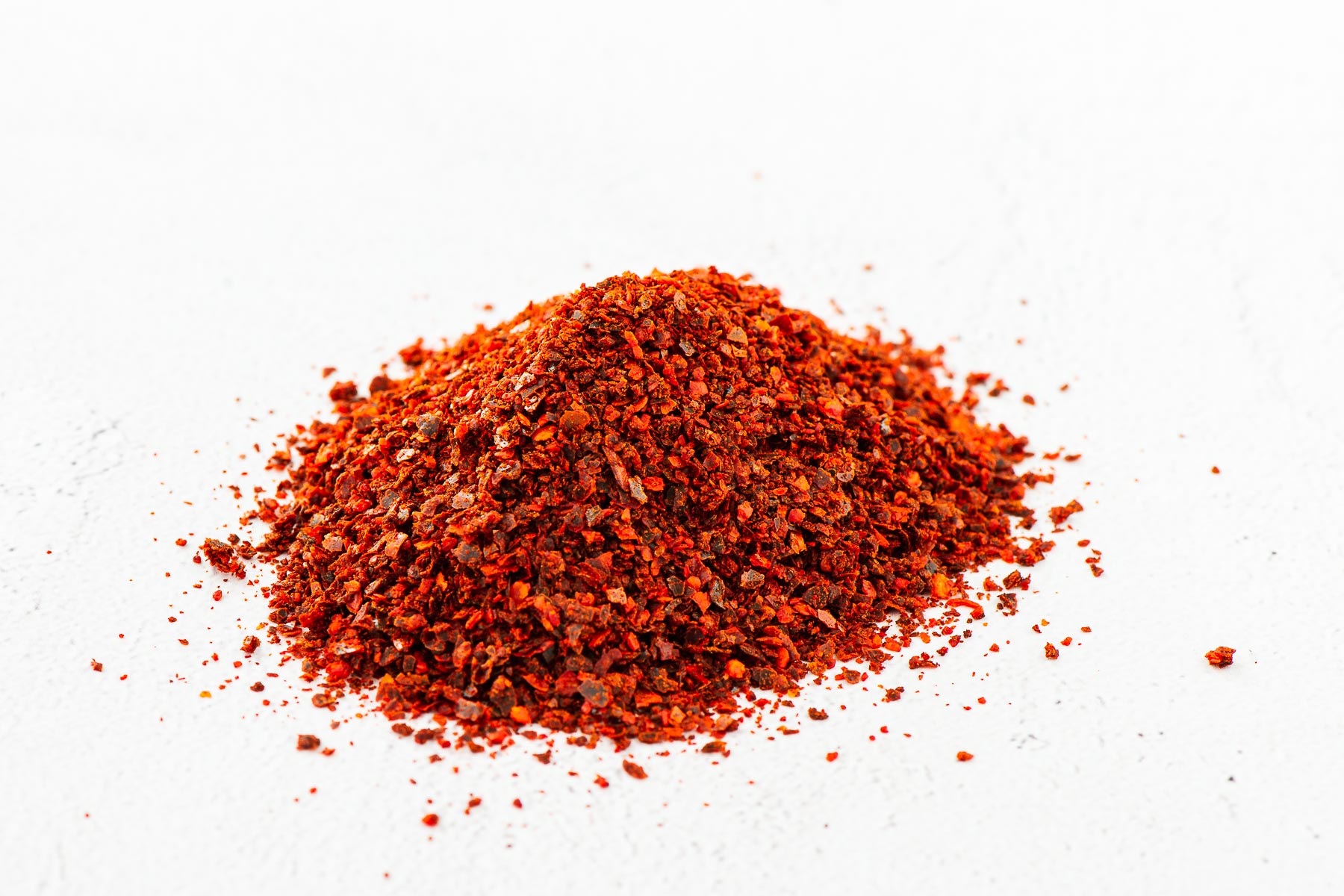
The flavour of gochugaru is slightly smoky and sweet. It makes gochugaru powder a decent substitute for cayenne pepper if you’re looking for a milder cayenne pepper alternative.
If your gochugaru is coarse, grind it into a fine powder to use as a mild substitute for cayenne pepper. Or use the coarse flakes as is in dishes that don’t require a super smooth texture.
Learn more about gochugaru and how to use it.
8. Chipotle powder
Chipotle powder is smoky and only moderately hot. The chipotle pepper (dried smoked jalapeños) measures between 2,500 and 8,000 SHU. And the chile powder has a deep, smoky flavour – noticeably more than cayenne pepper.
While chipotle powder is not a great match for cayenne pepper in terms of spiciness – or even in flavour – you can use it as a substitute for cayenne pepper powder if you’re in a pinch. Just as long as you’re happy with a milder heat and a smoky twist.
8. Red pepper flakes
Red pepper flakes make a decent replacement for cayenne pepper in dishes that don’t require a fine textured powder.
These crushed red pepper flakes can contain a mix of capsicum annuum peppers – from sweet and mild to hot. However, the spice mix most often contains cayenne pepper as the majority. But the exact flavour and heat will depend on the brand you buy. You can read more about the ubiquitous red pepper flakes (links to the bon appétit website).
Use one teaspoon of red pepper flakes for every teaspoon of cayenne pepper called for in a recipe. Then adjust according to your preference.
9. Hot paprika: A mild alternative
Don’t let the name fool you. Hot paprika is not really that hot at all. It is only spicier than regular or sweet paprika.
Hot paprika (or smoked Spanish picante pepper) is a type of ground chilli powder made from a mix of different peppers. It has a beautiful red hue and it’s wonderfully fragrant and smoky.

Cayenne pepper is up to 50 times as spicy as hot paprika. So, don’t use hot paprika as a cayenne pepper substitute if you’re after spicy food.
Use it as an alternative to cayenne pepper in sauces, soups and marinades if you want a mild alternative that is also flavour-packed. It will give your dishes a beautiful red colour, but it does not pack nearly the same spicy kick as cayenne pepper.
10. Spice mixture: Substitute for the adventurous
If you’re looking for a good cayenne pepper substitute, but don’t have any chile powder in the house, a spicy seasoning can do the trick.
Many spice mixtures include cayenne pepper and can give your dish a spicy kick with a more complex flavour. So, go through your spice rack to see if you have any spice mixes containing cayenne pepper.
Peri-peri spice mix (or piri piri powder) is a unique blend of spices originating from Mozambique. It’s typically not as hot as cayenne pepper, but it has a smoky, slightly sweet and spicy flavour, making it a more creative substitute for cayenne pepper.
Harissa powder is a fiery North African spice blend. It is rich and smoky with a delightfully spicy kick. But it works especially well in Middle Eastern and Mediterranean dishes.
If you’re looking for a spicy seasoning mix to finish a Mexican dish or sprinkle over fruit (yes, it’s a thing!), look no further than Tajín seasoning. While the main ingredient of Tajín is chilli peppers, it is surprisingly tart due to the dehydrated lime juice. It is not nearly as hot as cayenne pepper, but it’s delicious on guacamole and sprinkled over fruit.
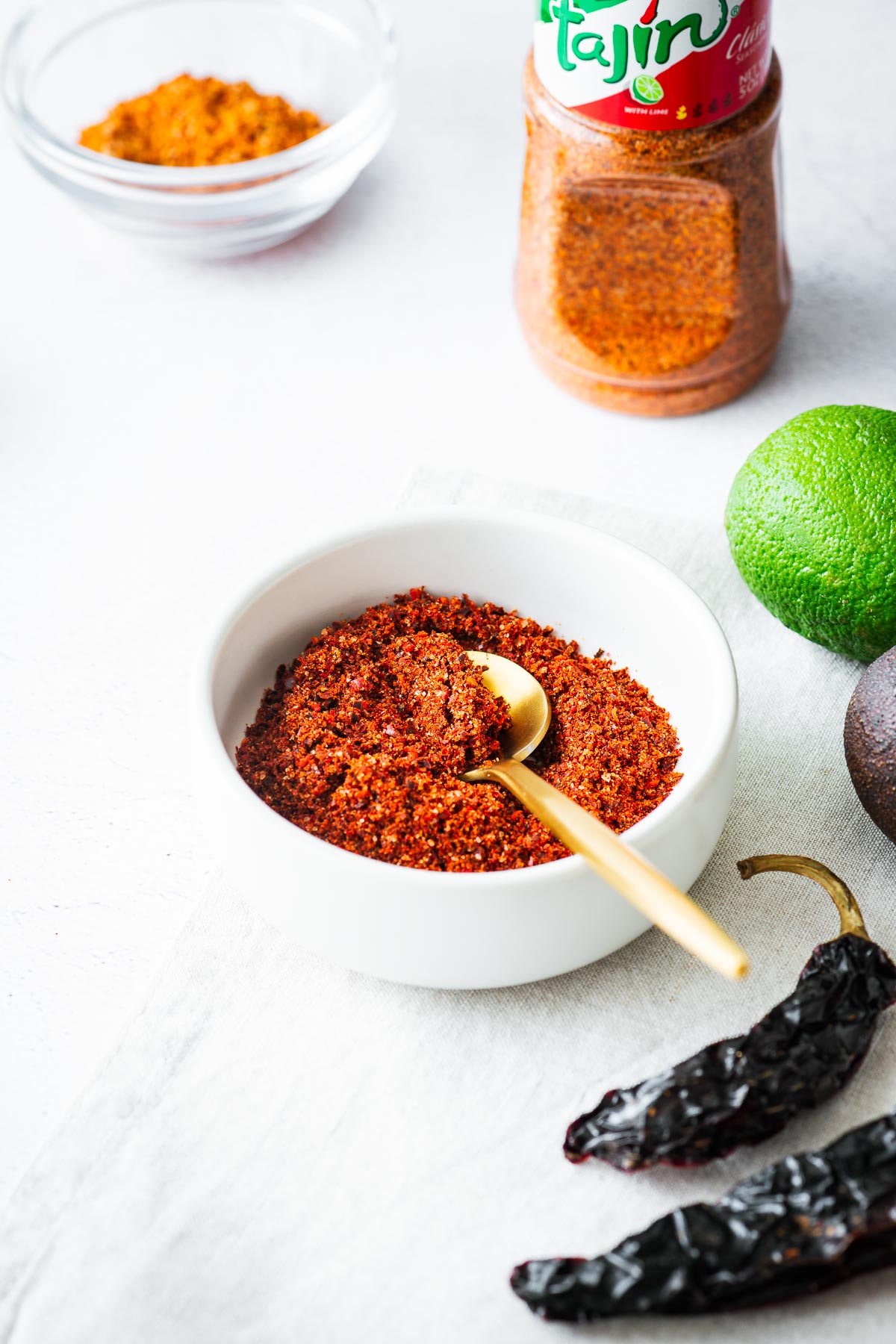
While they will never match cayenne pepper exactly, you can have some fun substituting cayenne pepper with different spice mixes.
11. Black pepper
Black pepper is a common spice with a mild earthy heat and almost bitter flavour. Admittedly, aside from its slightly spicy taste, it doesn’t have a lot in common with cayenne pepper flavour-wise.
I would normally place black pepper on the not-so-great alternative list. But, if you are allergic to nightshades or bell peppers, none of the other options on this list is suitable.
And, while it won’t have desired heat or red pepper flavour, you can certainly use black pepper to add a spicy kick to your marinades and sauces. Black pepper is also a delicious chilli pepper substitute in falafel and other fried goods (think, salt and pepper tofu or squid).
Double the amount of freshly ground black pepper you use to replace cayenne pepper.
12. Hot sauce
And when all else fails, there is always hot sauce.
If you don’t have any suitable chile flakes, why not grab that bottle of hot sauce to spice up your food? It won’t have the same flavour as a teaspoon of cayenne pepper, but it’s certainly an easy alternative.
Look for a Louisiana-style hot sauce made from cayenne peppers (like Crystal hot sauce) for the best substitute. Or use your favourite and roll with the flavours you already love.
This substitute will work in soups, stews and dips to add a spicy kick. But don’t substitute it in recipes where the added moisture content of hot sauce can cause problems – like fried food. Then it might be best to go for any of the chile powders listed above or leave it altogether.
How to make ground cayenne pepper (or substitute)
Use these step-by-step instructions to make a ground chile powder from any dried chile. Dried cayenne pepper makes real ground cayenne pepper, or try an alternative pepper for a ground cayenne pepper substitute.
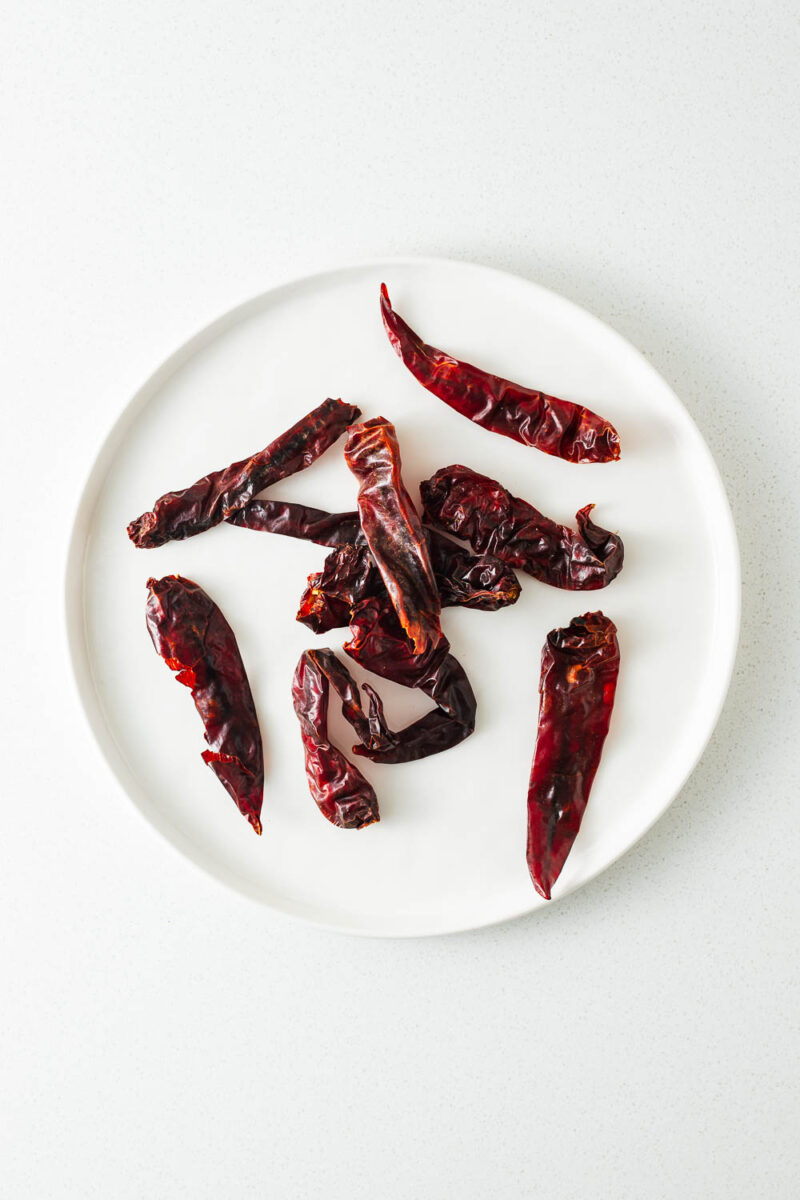
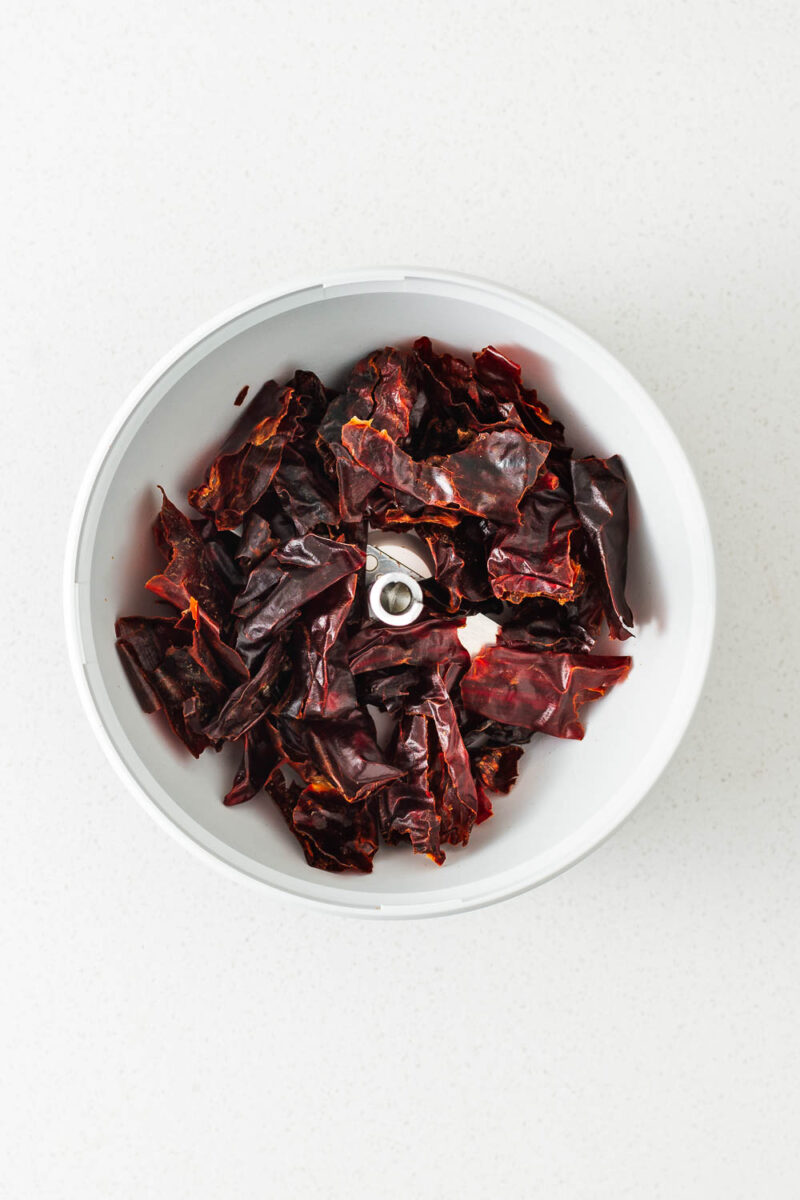
Step 1: Dry your chillies thoroughly. If your chiles are only semi-dried, pierce them with a pairing knife and leave them in a sunny spot until crisp and fully dried. Or place them in your oven at its lowest setting to dehydrate.
Step 2: Remove the stem from your dried red peppers and shake out the seeds. Then place the dried red pepper flesh in a spice grinder.
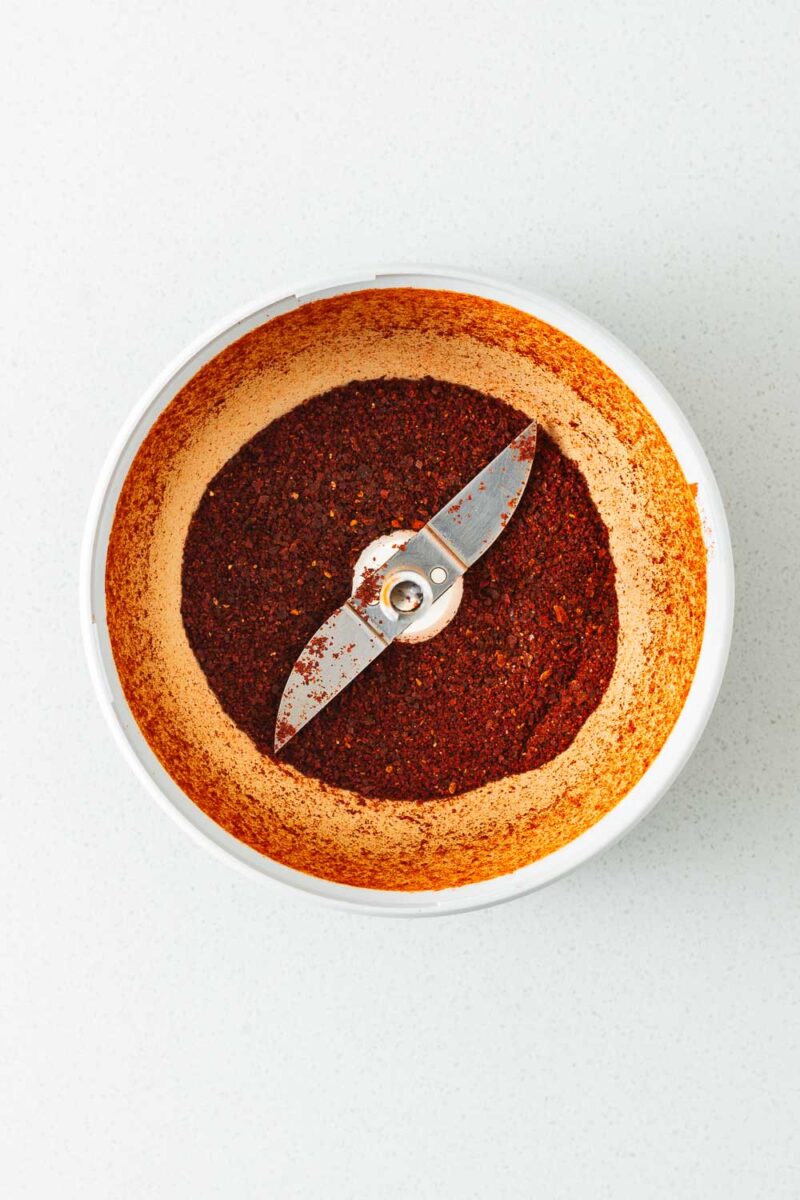
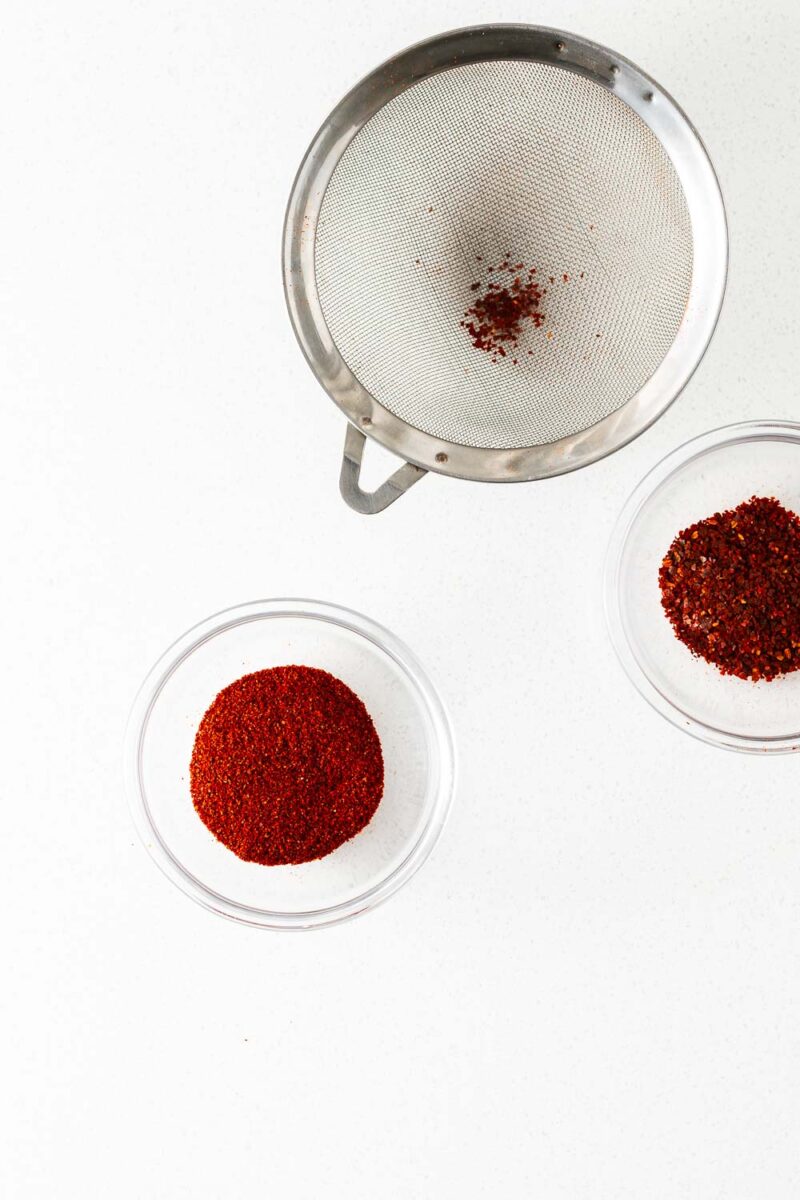
Step 3: Grind the chilli until fine. I do this for about two minutes.
Step 4 (Optional): Separate the ground chilli pepper into a fine powder and chile flakes with a fine mesh strainer. From ten dried cayenne peppers, I get about a tablespoon of each.
Frequently asked questions
Yes, chilli powder is a decent substitute for cayenne pepper. It has a mild to moderate spice level, with a mix of earthy and smoky flavours. However, chili powder is not as spicy as cayenne pepper, so you may need to add a bit more.
No, cayenne pepper and chilli powder are not the same. Cayenne pepper is a dried hot pepper with intense heat and a smoky, fruity flavour. On the other hand, chilli powder contains multiple types of dried chilli and may include other spices.
No, paprika and cayenne pepper are not similar. Paprika uses a mix of chillies. It’s significantly milder than cayenne pepper with a sweet red pepper flavour. And smoked paprika has a strong smoky taste. Cayenne pepper is much spicier with intense heat and a more fruity flavour.
You can substitute cayenne pepper for paprika if you don’t mind the extra heat. You’ll get a lovely red colour but a more intense heat and a fruiter flavour. Start with only a quarter teaspoon of cayenne pepper to substitute the paprika. Chipotle powder would be a better paprika substitute.
To make your own cayenne pepper at home, remove the stems and seeds from dried cayenne peppers. Then blend the dried pepper into a powder. Use a fine mesh strainer to separate the fine powder from the coarse flakes.

Ingredients
- 10 dried cayenne peppers* , or another spicy dried red pepper
Instructions
- If your chiles are only semi-dried, pierce them with a pairing knife and leave them in a sunny spot until crisp and fully dried. Or place them in your oven at its lowest setting to dehydrate.
- Remove the stem from your dried red peppers and shake out the seeds. Then place the dried red pepper flesh in a spice grinder and grind until super fine.
- You can use this ground chile as a ground cayenne pepper alternative. Or, for better results, use a fine mesh strainer to separate the ground chilli pepper into fine powder and chile flakes.
Notes
- The type of chile pepper you use will determine the heat and flavour of your ground red pepper. Using dried cayenne pepper will make actual ground cayenne pepper. But spicy dried red peppers like chile de árbol or Thai red chillies make excellent dried cayenne pepper substitutes in this recipe.
- If you don’t own a spice grinder, see the full blog post for the best cayenne pepper substitutes from other hot pepper powders.
If you love spicy food, you’ll love these recipes too:
- Harissa roasted cauliflower
- Shatta sauce (spicy green Middle Eastern hot sauce)
- Hot honey recipe for hot honey brussel sprouts or hot honey mustard
- Shakshuka with feta
- Mango habanero salsa
- Spicy Korean gochujang mayo
